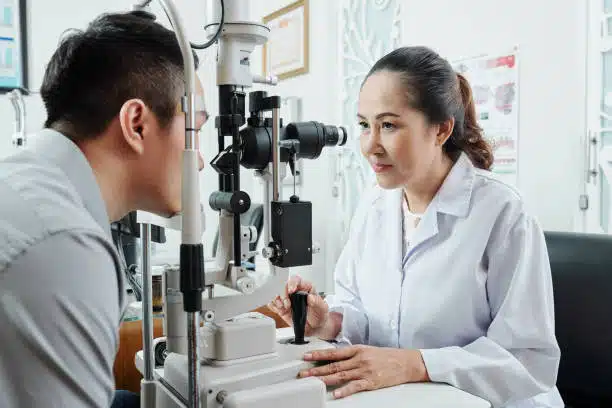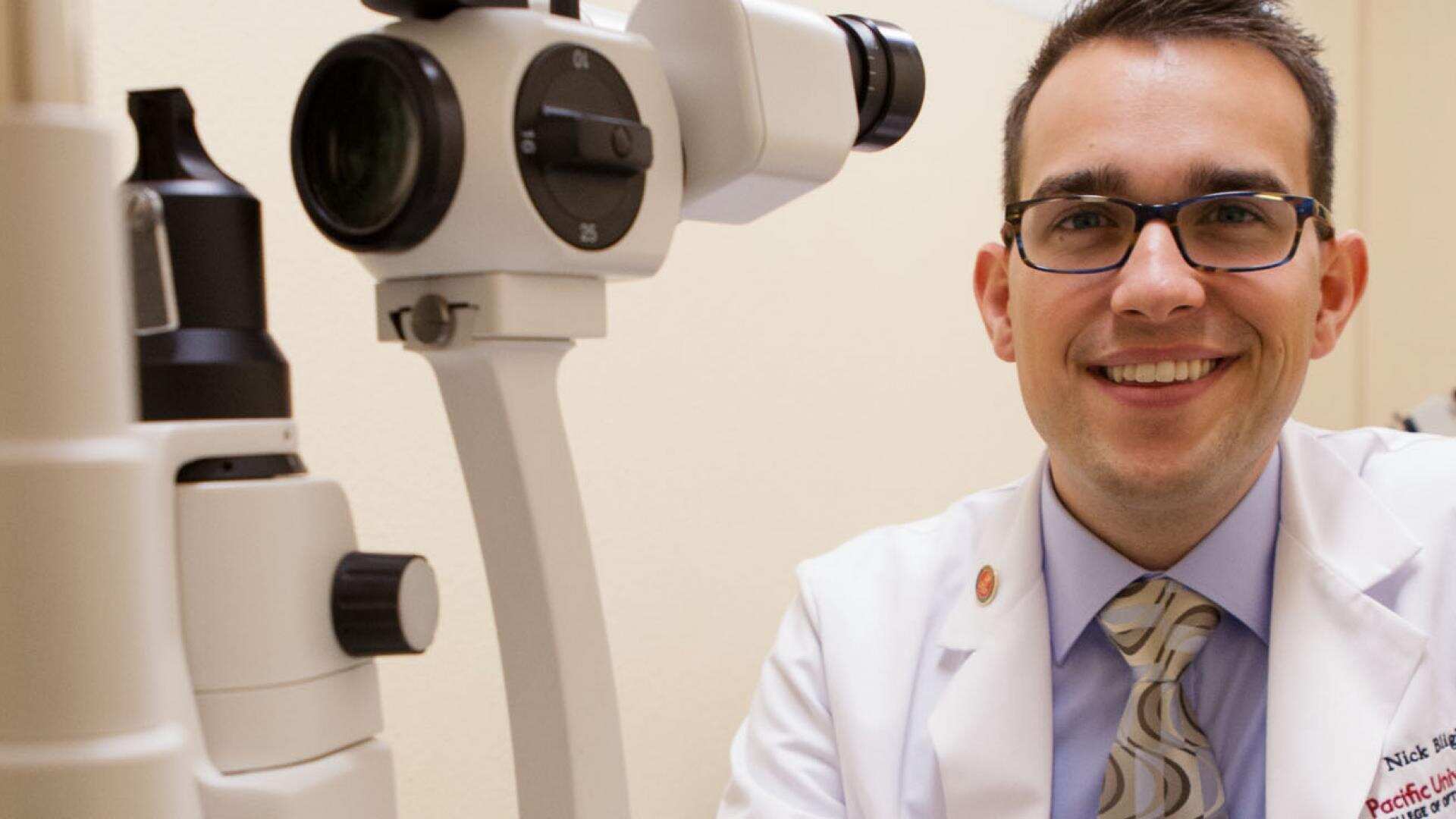Comprehending the Role of Your Eye Doctor in Preserving Vision
Comprehending the Role of Your Eye Doctor in Preserving Vision
Blog Article
Checking Out the most recent Technological Developments in Optometry and What They Mean for Eye Doctors
In the ever-evolving field of optometry, current technological improvements are reshaping just how practitioners approach eye care. From the precision of Optical Comprehensibility Tomography to the nuanced understandings supplied by AI-driven analysis tools, these innovations are setting brand-new requirements in individual evaluation and therapy. Teleoptometry is positioned to redefine accessibility, making certain that competence transcends geographical constraints. As these improvements permeate the technique, optometrists are faced with the challenge of accepting these tools to improve client results. The concern continues to be: how will these technical shifts redefine the roles and duties within the profession?
Technologies in Diagnostic Tools
Advancing the area of optometry, technologies in analysis devices have actually revolutionized the way eye treatment experts examine and diagnose ocular problems and aesthetic impairments. The past decade has seen significant technological advancements, enabling more exact and comprehensive examinations.
One more trick innovation is the intro of sophisticated corneal topography systems, which map the surface area curvature of the cornea with accuracy. These tools are particularly advantageous for fitting contact lenses and identifying corneal conditions. Electronic retinal imaging has transformed typical ophthalmoscopy, offering thorough, scenic sights of the retina that help with extensive aesthetic examinations.
The advancement of wavefront aberrometry has additionally been crucial, enabling the evaluation of refractive mistakes with unparalleled precision (Eye Doctor Optometrist). This modern technology assists in personalizing rehabilitative lenses and enhancing surgical outcomes for refractive surgical procedures. Collectively, these diagnostic improvements encourage optometrists to provide exceptional individual treatment, making sure early treatment and tailored therapy strategies, eventually enhancing aesthetic health and wellness end results
AI in Patient Monitoring
Structure on the foundation of innovative diagnostic devices, the incorporation of expert system (AI) in individual monitoring stands for a transformative leap for optometry. AI systems are increasingly utilized to boost effectiveness, accuracy, and personalization in individual treatment. By evaluating substantial quantities of data, AI can determine patterns and anticipate prospective ocular problems, making it possible for optometrists to customize interventions better. This capacity is vital in managing chronic eye illness such as glaucoma and diabetic retinopathy, where early discovery and continual tracking are key.
Moreover, AI-driven systems facilitate streamlined client communications and management processes. Automated scheduling, virtual assessments, and customized follow-up plans not only improve client satisfaction but also enhance time management for professionals. These systems can triage patients based on the seriousness of their conditions, guaranteeing that those in important requirement get timely interest.
Additionally, AI boosts decision-making by supplying optometrists with evidence-based recommendations and treatment paths. By incorporating data from electronic wellness documents, AI tools use insights that educate professional decisions, lowering the danger of errors and boosting patient outcomes. As AI continues to develop, its duty in patient administration will likely broaden, reshaping the landscape of optometric care.
Advancements in Retinal Imaging
In the realm of optometry, retinal imaging has actually observed impressive technological developments that are boosting analysis capacities and client this post treatment. Advancements such as Optical Comprehensibility Tomography (OCT) and fundus photography have actually reinvented exactly how optometrists assess the retina and visualize.
Improved imaging modalities like OCT angiography are additional refining diagnostic accuracy. Eye Doctor Optometrist. Such developments help with the recognition of min retinal modifications that could indicate condition progression.
Additionally, improvements in expert system are increasing retinal imaging by enabling computerized analysis of huge datasets. These go to this web-site systems help eye doctors in determining patterns a measure of pathology, thus improving analysis precision and effectiveness. Collectively, these advancements are changing retinal imaging right into a foundation of modern eye treatment, improving results and expanding therapeutic opportunities.
Teleoptometry's Growing Duty
Teleoptometry is progressively ending up being an essential part of eye care, driven by innovations in electronic communication and analysis tools. This is especially valuable in underserved and rural locations where accessibility to specialized eye treatment is often limited.
The assimilation of artificial intelligence (AI) additional enhances teleoptometry, making it possible for the evaluation of visual data and assisting in the discovery of ocular conditions such as glaucoma and diabetic person retinopathy. AI-powered formulas can swiftly translate complicated imaging information, supplying optometrists with beneficial understandings that bolster professional decision-making.
Additionally, teleoptometry sustains continuity of care through seamless integration with electronic health and wellness records (EHRs), enabling eye doctors to preserve comprehensive individual histories. This guarantees that clients receive constant and personalized care even when seeking advice from with different professionals.
Despite these advantages, difficulties remain, including making sure data protection and managing person expectations. Nonetheless, teleoptometry stands for a substantial stride towards even more accessible, effective, and patient-centered eye care. As technology evolves, its duty is positioned to increase better.

Future Trends in Eye Care
A myriad of ingenious trends is readied to improve the future of eye treatment, driven by technological innovations and the progressing needs of clients. One significant fad is the assimilation of fabricated intelligence (AI) in diagnostics, which promises to boost the precision and efficiency of eye assessments. AI formulas can evaluate substantial quantities of information from retinal photos, potentially detecting problems like diabetic retinopathy and glaucoma earlier than standard approaches.
Furthermore, personalized medication is getting grip in optometry, with hereditary testing educating customized treatment plans. This technique intends to enhance person results by customizing interventions to specific hereditary accounts. Wearable modern technology, such as clever call lenses, is also imminent, providing real-time monitoring of intraocular pressure or glucose levels, therefore offering continuous understandings right into ocular and systemic health and wellness.
The fostering of increased fact (AR) and online reality (VR) in training and client education is one more arising pattern. These modern technologies supply immersive experiences that can improve understanding and skills both for optometrists and individuals. As these trends develop, optometrists need to stay abreast of technological innovations to supply cutting-edge care, making sure better person outcomes and contentment in the vibrant landscape of eye treatment.
Final Thought

Collectively, these diagnostic improvements empower optometrists to supply superior client care, guaranteeing early treatment and customized therapy strategies, inevitably improving visual health results.

As these technologies proceed to progress, eye doctors must adapt and integrate them right into technique, eventually maximizing operations efficiency and raising the standard of eye care supplied to clients.
Report this page